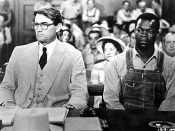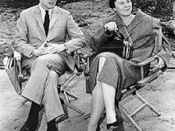The novel "To Kill a Mockingbird" by Harper Lee is unique because it contains two plot lines and climaxes. Harper Lee has skilfully combined the two plots in the one story to enhance the impact of the novel on the reader. The two plots are strategically interwoven in the novel and make the novel more interesting as well as emphasising the themes and symbolism contained in the novel. One of the plot lines involves Jem and Scout's adventures with Boo Radley, while the other is about Atticus Finch and his fight for Tom Robinson. The narrative structure employed by Harper Lee is both interesting and effective and contributes greatly to the impact of the novel on the reader.
On first thought the two plots are apparently quite different, and are yet in another aspect quite the same. The first plot line, that involving Boo Radley, seems a lot more of a childish, interesting plot.
The children wonder about Boo Radley, and at the beginning view him as a monster. As the plot advances, and Jem and Scout mature through their experiences and age, they begin to realise that he is also, like them, a human being. This plot is kept quite alive throughout the book, with small climaxes along the way, like when Boo Radley covers Scout in the blanket. It finally reaches its climax when Boo Radley makes his appearance and saves Jem and Scout.
The other plot is a lot more serious, but yet quite similar. It is also about a man who is initially prejudiced against in society. Tom Robinson, a Negro, for whom Atticus stands up to defend. This plot essentially relies on the first one, in how Scout judges the attitudes of the people in Maycomb. It is through her experiences with...


